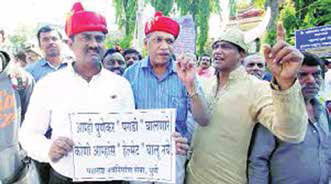Corporate Citizen Claps for the students of Space Kidz India, a space education firm in Chennai as they become the proud makers of the world’s lightest satellite
–The Kalamsat-V2

This satellite designed and built by these students weighs 1.26 kg, which is less than the weight of a wooden chair! The Indian Space Research Organization (ISRO) successfully launched the Kalam sat and an imaging military satellite, Microsat-R, from the Satish Dhawan Space Centre in Sriharikota, Andhra Pradesh, which also marked the 46th flight of ISRO’s workhorse-the Polar Satellite Launch Vehicle (PSLV) – a four-stage rocket and for this launch weighs about 260 tonnes. It is not the first time that Indian students have contributed to space missions. Nine other satellites have been made by Indian students in the past. K Sivan, Chief of ISRO, said that Kalam sat is equipped to serve as a communications satellite for ham radio transmission, a type of wireless communication used for non-commercial activities by amateurs. The satellite is being launched by ISRO’s PSLV. ISRO will for the first time reuse a stage of the rocket to launch the satellite. In traditional launches, various segments are discarded during an ascent and fuel is also removed. The first three segments in traditional launches would normally drop back to earth. The 4th and final stage uses liquid propellants, and therefore can be stopped and restarted several times to get a spacecraft into the right orbit. The fourth stage can take the Kalam sat satellite into a height of 277 km (172 miles) above the earth. “Why waste such a valuable resource? We decided to convert (the fourth stage) into an experimental orbital platform to conduct small experiments in space,” said K Sivan. The PSLV rocket costs upwards of $28m (£21m). So, in this mission, the last stage of the rocket will be “moved to a higher circular orbit” from where the Kalamsat-V2 is expected to beam down its signals. “This is the first time that ISRO is conducting such an experiment to reclaim a dead rocket stage and to keep it alive,” K Sivan said. ISRO has received seven applications from students for doing experiments in space. “Based on requirements from students, we will launch more such PSLV rockets this year so as to enable students to perform tests in space. This facility will be free for all students,” Sivan said.
Corporate Citizen slaps for anti-helmet activists who are fighting against the national helmet law, made mandatory since January 1, 2019

More precisely, the Pune-based ‘Helmet Sakti Virodhi Kruti Samiti’, recently held an elaborate public ceremony that symbolized ‘last rites’ bestowed to a motorcycle helmet. The protest was against recent episodes of police enforcement based on the mandatory ‘helmet law’ wherein the police had handed out 9,500 tickets for not wearing a helmet during that period of time. Although the helmet rule (Section 129) of the Motor Vehicle Act, was introduced in 1988, it was not enforced until now. A group of politicians and activists too protested and organized a two-wheeler rally whilst submitting a letter to the effect to the Commissioner of Police, Pune. “The use of helmet should not be made mandatory but keep it as a personal choice. There are many cases of people suffering from medical issues after using helmets. Hence, it is my opinion that this issue should be kept open to the public,” said Anil Shirole, Bharatiya Janata Party (BJP) leader and Pune Member of Parliament (MP). Other reason for not wearing helmets is that Pune city traffic rarely exceeds 20 mph and therefore it does not pose a threat to head injuries at low speeds. Other not so scientific reasons being helmets are believed to cause increased spinal injuries and even hair loss. While but very rarely, the extra weight of a helmet on the head might cause additional injuries; the ‘anti helmet’ propaganda definitely under-rides the possibility of lives saved by wearing them. Hair loss claim might be true if a loose helmet constantly rubs against the scalp, which can be avoided by a properly fitted one. Also, the incidences of two-wheeler accidents across the country have now prompted the transport ministry to form a committee for guidance on making lighter helmets. The Bureau of Indian Standards (BIS) will ensure that checks are in place for ISI helmets. Lighter helmets have been suggested to suit Indian road conditions and the proposal is for these to weigh around 1.2kg instead of 1.5kg. Fingers crossed for lighter helmets to strengthen road safety!.
by Sangeeta Ghosh Dastidar